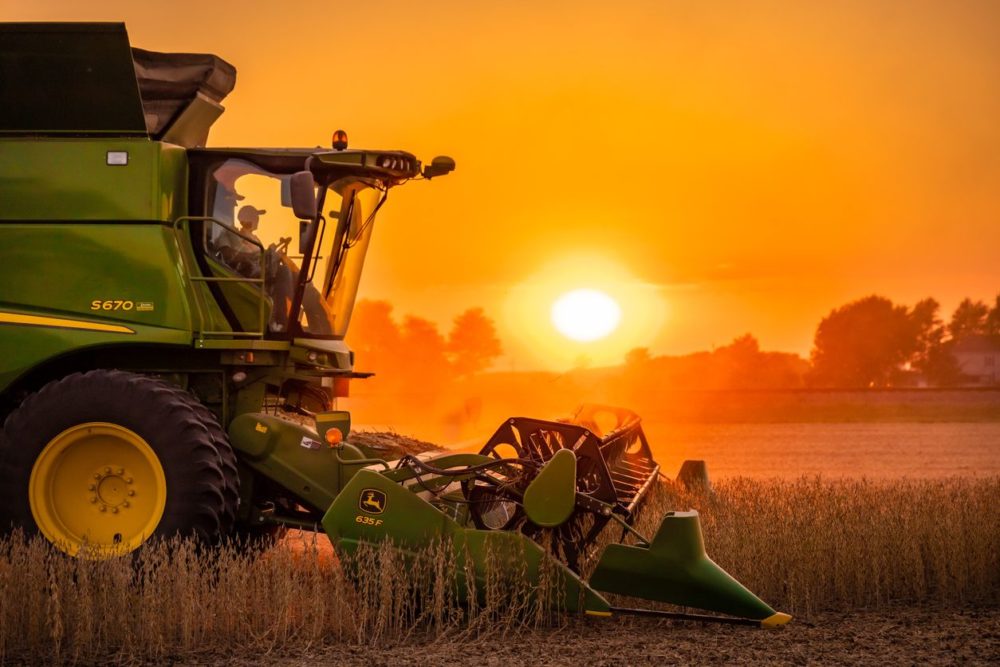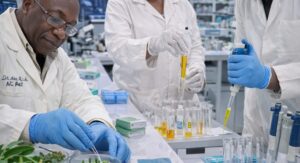“A tipping point.” “A pivotal moment.” “Great change.”
These phrases and similar were used several times to describe the current state of agriculture last week at the AgTech NEXT conference in St Louis.
They were referring, of course, to the upheaval taking place globally resulting from continued Covid-related supply chain disruptions, the war in Ukraine, and climate-related disasters. Farmers are grappling with volatile pricing for inputs at the same time that downstream consumers battle inflation in the grocery aisles. Droughts, floods, and fires are impacting crop production in many parts of the world. Hunger is on the rise again.
Onstage at the Donald Danforth Plant Science Center, panelists discussed various ways to deal with “a food system in crisis.”
The following are a few of the most compelling narratives to come out of the show:

Agricultural innovation needs a ‘farmer first’ approach
“Take a step back and say three times the word ‘agriculture.’ That’s what needs to ground you.”
With this statement, Citi‘s Adam Bergman told the AgTech NEXT audience that the Northstar of agtech innovation should be the farmer.
This might seem obvious. But the tech industry tends to overuse words like “revolutionize,” “reinvent” and “disrupt.” And these words don’t always go down well in an industry like agriculture.
“This is not social media, this is not the internet, this is not gaming,” said Bergman, who is managing director of the Clean Energy Transition Group and global head of AgTech Investment at Citi. “Adoption here is tough and it’s long and it takes a lot of effort. You need to understand your end market. You’re not coming into the ag sector and all of a sudden going to revolutionize things.”
He said this is especially true when it comes to understanding the end customer: the farmer. Farmers face significant barriers to adopting new technologies or transitioning to climate-forward practices in any short timeframe.
“Especially for family farms, it’s not as easy as switching practices out of the goodness of their hearts,” said DBL Partners founder Nancy Pfund.
“The economic incentives have to be there. The ease of technology adoption has to be there. Especially when growers are facing market unpredictability around increased costs and supply chain disruptions.”
True “agtech change-makers,” she said, will factor these things into their products and services.

Collaboration is critical to innovation — especially in tough markets
Today’s challenging market is an opportunity for companies that have historically never worked together to join forces. In Pfund’s words, it’s a chance to “work with groups previously seen as ‘the enemy.'”
CoverCress, Bayer CropScience, Bunge, and Chevron illustrated this when individuals from each company took to the stage to discuss their partnership.
CoverCress has a winter oilseed cover crop that can provide lower carbon fuel feedstock to the renewable fuel industry. Bayer, Bunge, and Chevron all previously invested CoverCress; in August, Bayer took a 65% majority stake.
The partnership between these four companies has helped CoverCress get buy-in from the entire “farm-to-fuel” supply chain. And in many ways, it’s a model for future collaborations in food and ag. Such partnerships will become more necessary over time as new crops come to market in response to food security needs.
“What’s really required in this is innovation in partnership throughout the chain,” said Jennifer Ozimkiewicz, senior vice president for Bayer CropScience. “You have to innovate at every part of the chain because it’s a new crop.”
Echoing Ozimkiewicz, Bunge’s vice president of carbon solutions Fernando Candia offered a litany of processes a new seed like CoverCress’s has to move through: “Moving a new seed through the regulatory process; moving it through a processing system that’s used to handling commodities; and then to an industry that’s decarbonizing.”
“This is not an easy thing to do,” he said, flatly.
Fortunately for startups, one single company doesn’t have to do it all.
“Startups are a bit like a 16-year-old just getting their license and wanting to buy a new car,” joked BioGenerator executive in residence Martha Schlicher.
She quickly added that startups don’t have to “own” the whole process, especially in the agtech community. Whether it’s R&D, agronomy, regulatory needs, lab equipment or finding personnel, there’s a pool of resources for those startups willing to seek it out.
“Once you’ve identified a challenge, you’re going to have to [go] outside the traditional thinking on how you address this problem. Sustainability and decarbonization are forcing us to do that,” said Candia. “It takes a little bit of a leap because we’re different companies that speak different languages, but I think it’s possible.”
That includes investment.

‘Investors aren’t going anywhere’
Bergman, who regularly speaks to investors, assured the audience of this point.
“They may not be investing at the current market or they’re having questions about valuation. But none of the investors I talk to are saying to me, ‘we’ve given up on agtech, foodtech, clean tech.'”
If anything, 2022 has been a major year for climate-tech investment, even as other agrifoodtech sectors struggle because of the current downturn. Biologicals, farm equipment innovation and farm data management products have all garnered funds recently.
As Bergman pointed out, what we’re really in right now is a “bridge” time. For startups, the question is how they will handle the next 12 to 18 months, which will require more creative approaches to capital and funding.





